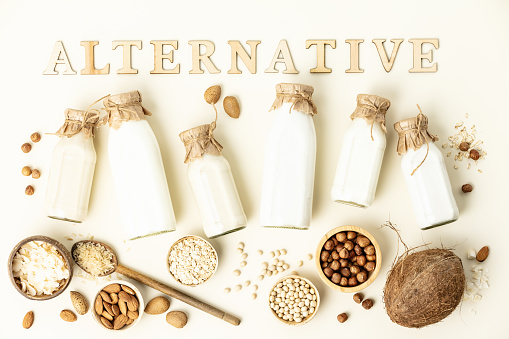Top 5 Alternative Protein Sources: Revolutionizing the Future of Nutrition

Top 5 Alternative Protein Sources: Revolutionizing the Future of Nutrition
In the quest for sustainable and nutritious food options, alternative protein sources have emerged as game-changers. As the global population rises and traditional protein sources face challenges, exploring alternative options becomes imperative. This article will explore the top five alternative protein sources transforming the nutrition landscape. From plants to insects and even laboratory-grown meat, these alternatives offer promising solutions to meet the world's growing protein demands.
Plant-Based Proteins
Plant-based proteins have gained immense popularity in recent years. Not only are they environmentally friendly, but they also offer a wide range of health benefits. Legumes, such as lentils, chickpeas, and soybeans, are excellent plant-based protein sources. They are rich in essential amino acids, fiber, and micronutrients, making them an excellent choice for vegans and vegetarians. Nuts, seeds, and whole grains like quinoa and amaranth also provide valuable protein content. The versatility of plant-based proteins allows for the creation of numerous meat substitutes like tofu, tempeh, and seitan, satisfying even the most discerning palates.
Insects
While it may sound unconventional, insects make waves in the alternative protein scene. Insects, such as crickets, mealworms, and grasshoppers, are highly nutritious and have a significantly lower environmental impact than traditional livestock. They are rich in protein, healthy fats, vitamins, and minerals. Furthermore, insects require minimal space, water, and feed, making them an ideal solution for sustainable protein production. Although insects are yet to become mainstream, they are gaining traction as ingredients in protein bars, snacks, and even pasta.
Algae
Algae, commonly known as seaweed, is a nutritional powerhouse from the ocean's depths. This alternative protein source offers an impressive array of nutrients, including high-quality protein, omega-3 fatty acids, vitamins, and minerals. Spirulina and chlorella, two popular types of algae, contain complete protein profiles and are easily digestible. Algae cultivation requires no arable land and can be grown in saline water, reducing the strain on freshwater resources. With its versatility, algae can be incorporated into smoothies, salads, and even plant-based meat alternatives.
Cultured Meat
Cultured meat, lab-grown or cell-based meat, is a groundbreaking alternative to traditional animal farming. It involves growing animal cells in a controlled environment, eliminating the need for traditional livestock rearing. Cultured meat offers a sustainable solution that significantly reduces greenhouse gas emissions, land use, and animal cruelty. This innovative protein source holds the potential to replicate the taste and texture of conventional meat, appealing to meat lovers while addressing ethical and environmental concerns.
Mycoprotein
Mycoprotein, derived from fungi, presents a unique alternative protein source. One prominent example is Quorn, a mycoprotein-based meat substitute that has gained popularity worldwide. Mycoprotein is not only rich in protein but also high in dietary fiber and low in saturated fat. Fungi cultivation requires fewer resources than conventional livestock farming and has a lower carbon footprint. Mycoprotein-based products, such as burgers, sausages, and nuggets, offer a sustainable and tasty alternative for those seeking to reduce their meat consumption without compromising flavor or nutrition.
Conclusion
The top five alternative protein sources explored in this article represent a paradigm shift in how we produce and consume protein. With their remarkable nutritional benefits, reduced environmental impact, and innovative production methods, these alternatives pave the way for a more sustainable and ethical future for food. Embracing these alternative protein sources benefits our health and improves our planet's well-being. It's time to expand our culinary horizons and embark on this exciting journey of alternative protein exploration.
